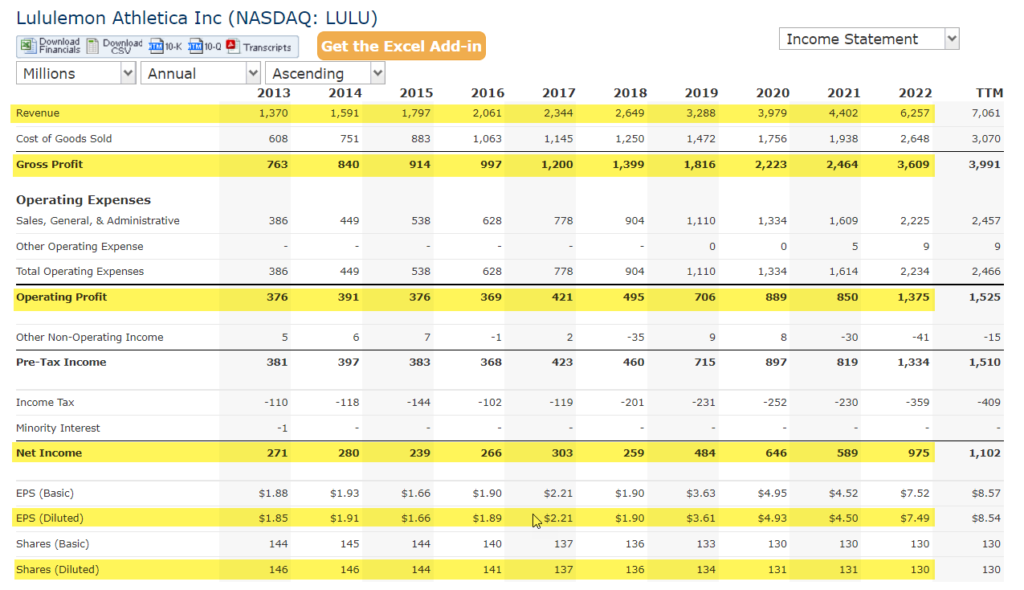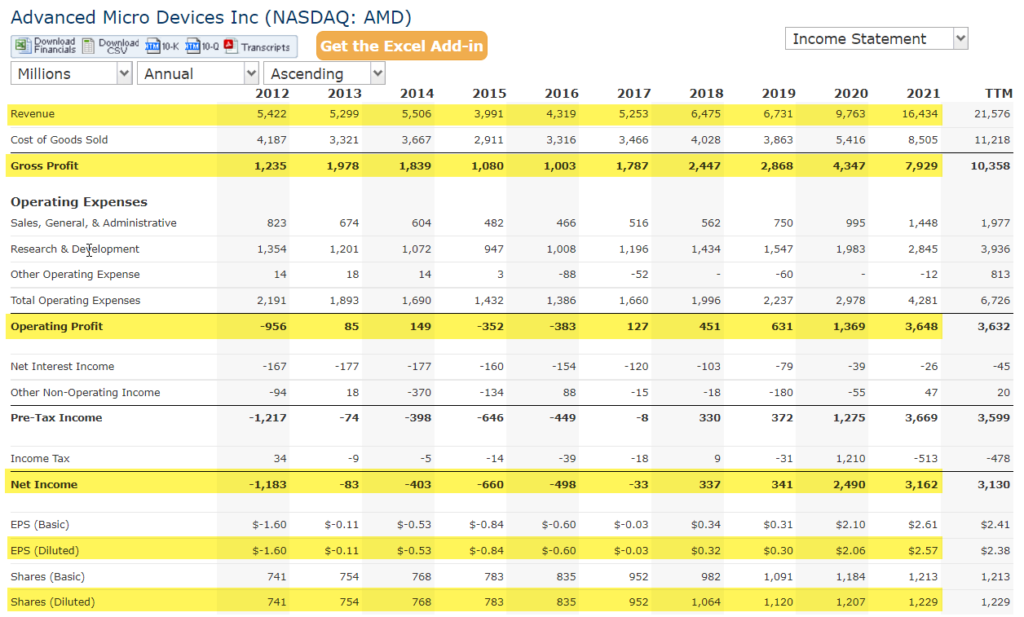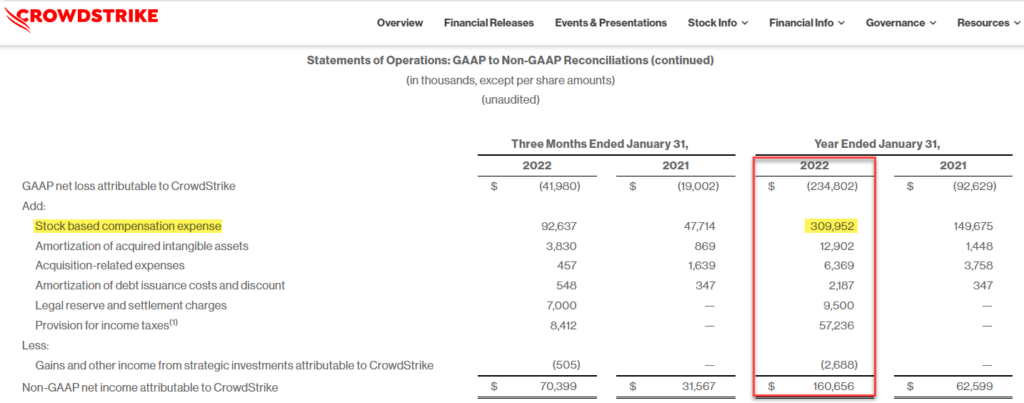You’ve successfully performed your first stock screen, and now you’re trying to determine if the stock you’re looking at is a good investment. Ever been there before? Did the stock screener give you a false positive? Or does the stock represent an opportunity to make a decent return over the coming years?
Typically, the Income Statement is the first place I look to gauge whether I want to spend any more time researching a stock. Here’s my common sense approach to quickly analyze a company’s Income Statement. Don’t forget some of the tools you’ll need along the way.
Within minutes of reviewing the Income Statement, you’ll soon be able to determine if a stock warrants additional attention.
Look to the past to inform the future
“Past performance is not indicative of future results.” This is a common phrase made at the beginning of nearly all earnings conference calls. It’s a means to keep companies out of legal trouble should future performance not match their guidance. However, a company’s past performance can give you a good idea of where it’s headed in the future. After all, exceptional companies don’t usually cease to be exceptional overnight.
Consistency and predictability
When analyzing the Income Statement, look for trends in the company’s previous 10 years’ performance. Quickfs is an excellent resource and the yearly data is free. Specifically, I like to see all of the following metrics increasing each year, except diluted shares outstanding which I like to see decreasing each year.
- Revenue
- Gross Profit
- Operating Income
- Net Income
- Diluted Earnings Per Share (EPS)
- Diluted Total Number of Shares Outstanding – decreasing
Take a look at Lululemon Athletica (LULU), for example. I’m all about consistency and predictability and LULU has delivered both over the past decade.

Then there’s Advanced Micro Devices (AMD) who’s financial performance has been all over the place. This is because AMD operates in an industry that’s cyclical, meaning there are boom and bust years. Personally, I stay away from cyclicals because it’s too difficult to predict when the next boom might happen.
Also, notice how diluted shares outstanding is increasing each year? There are numerous reasons why companies issue shares, usually to raise cash or compensate employees. As a shareholder, what’s important to know is you own a smaller piece of the pie than you did before.

Real profits and earnings
After receiving a D or F on a test in school, did you ever try handing the test back to the teacher claiming the true grade was an A and the teacher actually agreed with you? Didn’t think so, but this is the equivalent of what companies do every quarter on Wall Street.
Public companies are required to report earnings using Generally Accepted Accounting Principles (GAAP); however, a lot of GAAP unprofitable companies report non-GAAP profitability. They do this by adding non-cash expenses back into the Income Statement. In some instances, like depreciation and amortization, this makes sense. But for items such as stock-based compensation (SBC), I think it’s egregious. This is because it’s dilutive to shareholders. SBC may be non-cash to the company, but shareholders end up paying the bill.
It’s important to note there’s a big difference between GAAP profitability and being cashflow positive. A company can be GAAP unprofitable and cashflow positive. A lot of technology companies are in this position because they have a high amount of SBC.
Back to our LULU example. You can easily see that LULU is GAAP profitable because Net Income is positive. There doesn’t appear to be any foolery here.

Compare LULU to Crowdstrike (CRWD) and it’s a different story. Notice how Crowdstrike’s Net Income and EPS have been negative since 2017?

Yet in Crowdstrike’s Q4 2022 earnings release, they report full year 2022 non-GAAP earnings of $160 million. That’s a far cry from the $235 million loss reported in GAAP earnings. And what’s the largest non-cash expense being added back in? SBC, to the tune of nearly $310 million. This also explains why diluted shares outstanding is increasing each year.

A stock like Crowdstrike may still end up being a phenomenal investment. You just need to be aware of what you’re getting into before you’re already in it. Bear markets, like 2022’s, typically aren’t kind to companies that are profitable only after a pencil-whip of the Income Statement.
Keep it simple
When it comes to analyzing the Income Statement, it’s important to keep it simple. Remember, the goal of this quick review is to determine if the stock you’re looking at warrants additional attention. “Trash” or “pass” is the question at hand. You can worry about gross margin and operating margin after concluding your stock is a “pass”.
